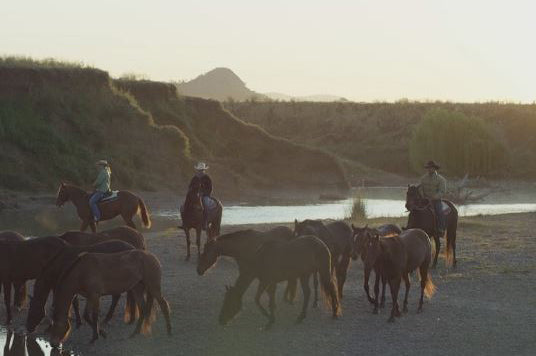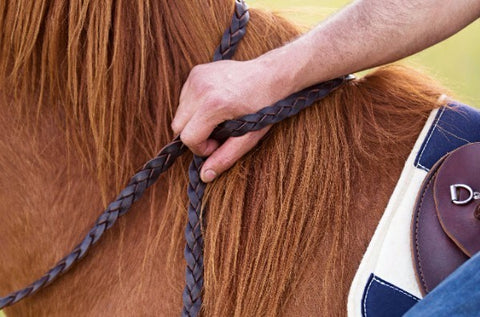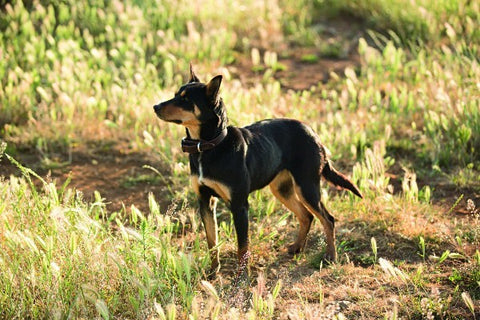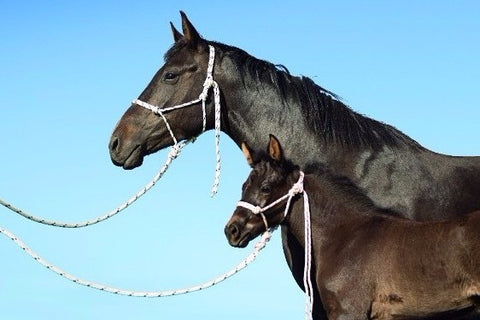WE'RE HIRING - CUSTOMER SERVICE REPRESENTATIVE. CLICK HERE FOR MORE INFORMATION
Menu
-
-
Saddlery
-
Leather Goods
-
Raw Materials
-
- Our Story
- Why Buy From Angus Barrett Saddlery?
- 0408 980 896
- Login
-
Australia (AUD $)

WE'RE HIRING - CUSTOMER SERVICE REPRESENTATIVE. CLICK HERE FOR MORE INFORMATION
Mega Test
Link to your collections, sales and even external links
Add up to five columns
Link to your collections, sales and even external links
Add up to five columns

Angus Barrett – Droving Series – 2 of 4
March 16, 2016 7 min read
Angus Barrett Saddlery Droving Series - Chapter 2 - Watch Now
“In my wild erratic fancy visions come to me of Clancy
Gone a-droving 'down the Cooper' where the Western drovers go;
As the stock are slowly stringing, Clancy rides behind them singing,
For the drover's life has pleasures that the townsfolk never know...”
Gone a-droving 'down the Cooper' where the Western drovers go;
As the stock are slowly stringing, Clancy rides behind them singing,
For the drover's life has pleasures that the townsfolk never know...”
AB 'Banjo' Patterson deliberately painted a romantic vision of the droving life in his famous piece, Clancy of the Overflow (written in the late 1800s). He tells the story of a city-dweller yearning for what he imagines is the free and unburdened life of the drover, Clancy.
Banjo Patterson was no fool to the harshness of droving life though. He wrote a number of other poems about a character called Saltbush Bill who drove starving mobs of sheep huge distances in an attempt to find feed during the 1880 drought. Henry Lawson also wrote a short story, called “The Drover’s Wife” which highlights the lonely and often dangerous life of a mother left to look after the farm and their children while her husband goes droving. While he is away droving, she endures floods and bushfires, itinerant swagmen, bouts of sickness and the tragedy of unaided child bearing.
“…The younger children are quieted, and presently go to sleep. The dirty-legged boy stands for a moment in his shirt, watching the fire. Presently he looks up at her, sees the tears in her eyes, and, throwing his arms around her neck exclaims:
“Mother, I won’t never go drovin’ blarst me if I do!”
In literature and folklore, droving often enjoys a romantic notion, one created out of visions of outback sunsets and long, uninterrupted trails, where a person is free to roam unbothered and unhurried. In reality, it serves a very practical purpose. Droving is most often done because times are tough, when feed is sparse and water low. It’s often a lonely time, away from all family and friends. So what’s it like, being on the road as a drover? What do the drovers themselves get out of it?
We thought we’d ask some of our industry’s best known characters about their experiences droving and what they personally get out of it.
First up is an interview with Troy Palmer of Binnia Performance Horses, Coolah. It was Troy’s team that we filmed with last year on the Namoi River, travelling along the stock route from Coolah towards Narrabri.…
Interview with Troy Palmer - Binnia Performance Horses
"[Droving] definitely takes a certain kind of person – a mad one probably! It’s pretty hard work and you’ve gotta be there rain, hail or shine. There's no calling in sick. But what I love about it is being out in the bush, looking after cattle and being able to work my horses and dogs every day. It’s a lifestyle and a living. And it’s helluva lot better than being couped up in an office I reckon!"

Troy Palmer droving on the Namoi River with his stallion Impressive Destiny and dog Riley.
Q> When we met up with you last year, you had a mob of cattle on the road. Where were you going and what was the purpose of the trip?
We were droving cattle for Greg Upton. In the winter he likes to de-stock to give his place a rest and to put some weight on his cattle. The cattle were trucked to Coolah, unloaded at Old Turee Station and then we walked them from Coolah to Mullaley, Boggabri, Narrabri, across to Spring Ridge and then we trucked them out from Caroona.
Q> Where else have you done your droving over the years?
I’ve been across most of NSW over the years. I’ve also walked from QLD down to Wee Waa; out to Come by Chance; from the Pilliga down to West Wyalong and around the New England, Coonamble, Moree. My best trip was taking a mob of really good steers up to Narrabri and back into Caroona. It all comes down to the cattle and how much handling they’ve had. I once had a mob of Hereford cows and weaners from Bourke that I unloaded into the break at Moree and there may as well not have been a fence there. They went straight through it, in all directions. I spent three days getting them back together!.
Q> How old were you when you first went droving?
I was about sixteen when I started. I used to go with the old man. He used to do a fair bit of it, either by himself, or with me and my brother, or Mark. We used to just camp in the back of the old truck. It was a pretty rough camp – bloody cold in winter and wet when it was wet. I think it was nearly wetter inside the truck than it was outside! I’ve been droving on and off since then. It depends on the season, but I’ve probably moved 40 or 50 different mobs over the years.
Q> Why do you take to droving? Is it out of a sense opportunity, necessity or just enjoyment?
It’s not something you do for fun. I would say that 99% of the time you’re forced to be out there because there’s a drought, you’ve been burned out, or some other natural disaster has forced you out there. There’s a very minimal romantic side to droving. It’s 7 days a week and you’re married to the job. You can’t leave and have a day off. It’s daylight to dark and you’re the 24 hour carer of your stock. The toughest times on the road are when it’s wet. If you get soaked at 6:30am and it’s a cold day, you’ll be wet all day. They’re the hardest days. It’s not an easy job, but it’s one that’s been in Australia’s history forever. We're there looking after and caring for some of Australia’s beef herd, quite often when they've got nowhere else to be.
On the plus side, it’s a job that lets you work on your horses. That’s what I enjoy. I love training horses and working cattle. And I get to meet a lot of people, just by people pulling up to have a yarn or take some photos. And country people are generally pretty hospitable. It's not very often that you pull up in someone's driveway wanting to fill up a water tank that you get a 'no'. And 99% of the time people go out of their way to help.
Q> How long is a typical stint?
The longest stint I’ve done is 15 months without a break. You keep busy during the day, but the nights are pretty lonely when you’re on the own. You get used to it though. The worst thing is being away from your home and family for so long. It’s hard on the family.
Q> What’s your camp like?
I generally have one or two other fellas with me, but sometimes I’m just on my own. Our mobs are mainly around the 1,000 head mark and I usually have 10-15 working dogs with me and about 15 horses between me and the other fella. I have a pretty good camp set up now with my truck and van. Fiona cooks stews that I keep in the freezer and heat up in the camp oven. My speciality dish is a two day old spag bol that I top with mashed potato – it makes for a pretty good Shepherd’s pie. We generally don’t eat much during the day and we start with a “Drover’s Breakfast”.
Q> Do you use a combination of vehicles and horses? Why horses?
Yeah, we always have a combination of horses and vehicles. The work is good for the horses, but you need them on the job too. If you’ve got a steer on the other side of the river, you can’t use a quad to go and get it. It's also a lot easier on a horse to cut out a beast.
Q> What do your horses get out of it?
Work wise, it keeps them fit and just gets some time on them. It’s also an opportunity to train. You can take a two year old horse, just 10 days broken in, and it will be the best thing for them. Our stallion, Impressive Destiny, spent about 12 to 18 months droving with me when he was a three year old. He’d just won the National Stock Horse Futurity at Albury Wadonga and I ripped the rugs off him and he went straight to work. I reckon it gave him the foundation to become the horse he is today. It’s made him really versatile. He won the National Stock Horse Futurity and the Open Challenge at the Australian Stock Horse Nationals. His mother, Binnia Impression, also won that. He won the World Championship Drafts over six rounds at the Royal Easter Show. And I reckon his best achievement, that really shows his consistency, is that he’s won 7 ABCRA Horse Titles, including four Open Horse titles, which no other horse has done. It’s one of the toughest things to win and puts him up there in company with the likes of Johnny Stanton’s Doc and Terry Hall’s Rex.
Q> How important are your dogs when you’re droving?
I reckon a good dog is as good as two young fellas sometimes. I’ve got an old yellow and white dog, called Riley, and I’m dreading the day he gets put down, because you just can’t replace dogs like that. They’re an integral part of droving. If you haven’t got a decent team of dogs, you’re up the creek!
Q> Why do you do it?
It’s easy to get sour after too long on the road. You’ve got to give your fellas a spell and it definitely takes a certain kind of person – a mad one probably! It’s pretty hard work and you’ve gotta be there rain, hail or shine. There's no calling in sick. But what I love about it is being out in the bush, looking after cattle and being able to work my horses and dogs every day. I kind of kill two birds with one stone. It’s a lifestyle and a living. And it’s helluva lot better than being couped up in an office I reckon!
Q> And finally, the question everyone wants an answer to – are the rumours true, that you’re taking Fiona on a surprise droving trip for your honeymoon?
Ha ha ha! Hell no! I don’t want to be divorced before I get married!
Angus Barrett Saddlery Droving Essentials


Nose Bags

Subscribe
Sign up to get the latest on sales, new releases and more …

